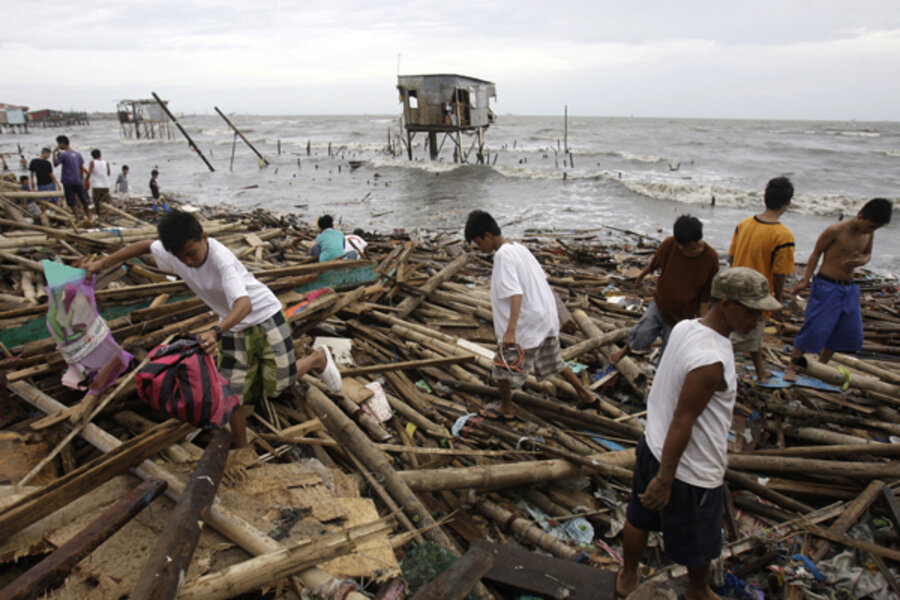Philippines scrambles to recover from Typhoon Nesat as another storm bears down (video)
Loading...
• A roundup of global reports
The Philippines, an archipelago nation described as a "welcome mat" for typhoons, is preparing for another direct hit less than two days after Typhoon Nesat flooded the capital of Manila and much of the island of Luzon, affecting more than 300,000 Filipinos.
Nesat has cleared the Philippines, and authorities have mobilized recovery crews. But Tropical Storm Nalgae is expected to make landfall in the next 24 hours, CNN reports. At least 21 people were left dead and 33 people are still missing in Nesat's wake, while some 79,000 people received assistance at evacuation shelters.
Power, knocked out by flooding and high winds, is gradually being restored throughout Manila and across the island of Luzon.
While the water, waist-deep in some spots, is receding, low-lying agricultural areas across Luzon are still largely underwater, the Associated Press reports. In Manila, the capital city, workers are scrambling to plug holes in overwhelmed seawalls with sandbags before the tropical storm makes landfall and potentially sends waves crashing inland once again.
Australia Broadcasting Corporation (ABC) reports that authorities say their top priorities are helping those stranded in villages that are still flooded and repairing Manila's damaged infrastructure before more bad weather strikes.
[ Video is no longer available. ]
In the rice-farming town of Jaen, many of the 63,000 residents were still awaiting rescue on Wednesday, according to Mayor Santiago Austria, but the town had only four rescue boats. The town of Obando, north of Manila, is still under waist-high water, according to a separate AP report. ABC reports that eight dykes broke in Obando alone and rescuers in trucks have been unable to get through the high waters.
The national natural disaster agency estimated damage costs of $2.3 million, with about $38,000 in agricultural damages, the Guardian reports.
Bloomberg reports that 2011 was expected to be a record year for the Philippines's rice crops until the typhoon. Luzon rice production makes up half of the country's total rice harvest.
“Had it not been for this storm, we could reach record output this year,” Agriculture Secretary Proceso Alcala said in an interview with DZRH Radio, when asked about rice production. “We’re praying for the sun to shine.”
The agriculture agency and central bank are reviewing the extent of crop damage. The Philippines used to be the world's largest importer of rice, but cut its imports by half and significantly increased domestic production. On Sept. 26, before the typhoon's arrival, the country was on track to meet its production target for the year.
The Philippines averages 20 major storms a year.





